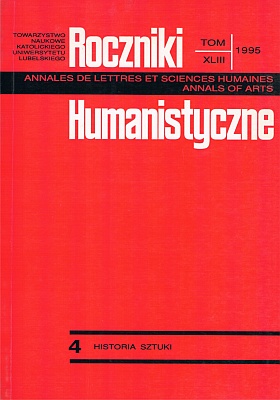Rewolucja w malarstwie historycznym
(tłum. z ang. Marek Wacławek, przekład przejrzała Elżbieta Wolicka)
Abstrakt
In his essay The Revolution in History Painting Edgar Wind traces the process of forming contemporary historical painting which takes its ultimate shape, and at the same time its climax, in the 19th c. It was Benjamin West who initiated the changes in depicting the events from the past. He stood against the academic rules of decorum painting The Death of General Wolfe in 1771 in contemporary costume and setting. The painting, similarly as other images from the colonial wars, made use of the scenery which clearly referred to the marvels of the East. Such a convention of presenting, characteristic of this kind of work, Wind calls mitigated realism. In view of the places they depicted these paintings were "unreal", distant, but at the same time, due to a short time span of the events, which they commemorated, they were almost contemporary. It is due to their exotic themes that it was possible to introduce a contemporary costume and prop to history painting in grand style. The distance of places was supposed to safeguard grandeur to a work, balancing in a way the use of less "precious", being in accordance with historical reality, robes of the heroes of the presentation. Both the new theme of the works and the way of presenting the figures were inspired by an extended then national consciousness, and found its analogies in theatrical work. The new way of depicting the past, introduced along with the motifs mirabilia was transposed to a totally different genre of painting. We mean here conversation piece: the group portrait in a commemorative setting. The paintings made in this genre originally bore the character of a portrait, but due to a sublime pathos or a dramatic action, which were gradually introduced in the presentations, they gained a historical dimension too. The episode illustrated by Copley in The Death of the Earl of Chatham in reality had taken place in the London House of the Lords a year before the painting was made. Thus West's convention, which he made use of in mirabilia presentations, was applied in the Copleyan formula of a graphic reportage. History painting developed by Copley on the basis of conversation piece anticipated Hogarth's and Thornhill's pictorial news, a presentation of common trespassers who are - due to their sensational and dramatic theme - an intermediate form between a common portrait and history painting in contemporary costume.
Thornhill himself as early as the 1820s considered a possibility to introduce historically accurate costumes and props into a painting. Finally he gave up the idea. West and Copley would return to it fifty years later. The revolutionary change in history painting, initiated by the works of these two artists, was conditioned by the social and political situation. Both painters were of American descent, and the time in which they created was the time of the fight for American independence. This was their privileged position and respect which they received in the then society made it possible their putting into practice such a radical artistic enterprise. Democratic ideas voiced by American artists made a breakthrough in the academic rules of history painting.
Copyright (c) 1995 Roczniki Humanistyczne

Utwór dostępny jest na licencji Creative Commons Uznanie autorstwa – Użycie niekomercyjne – Bez utworów zależnych 4.0 Międzynarodowe.





